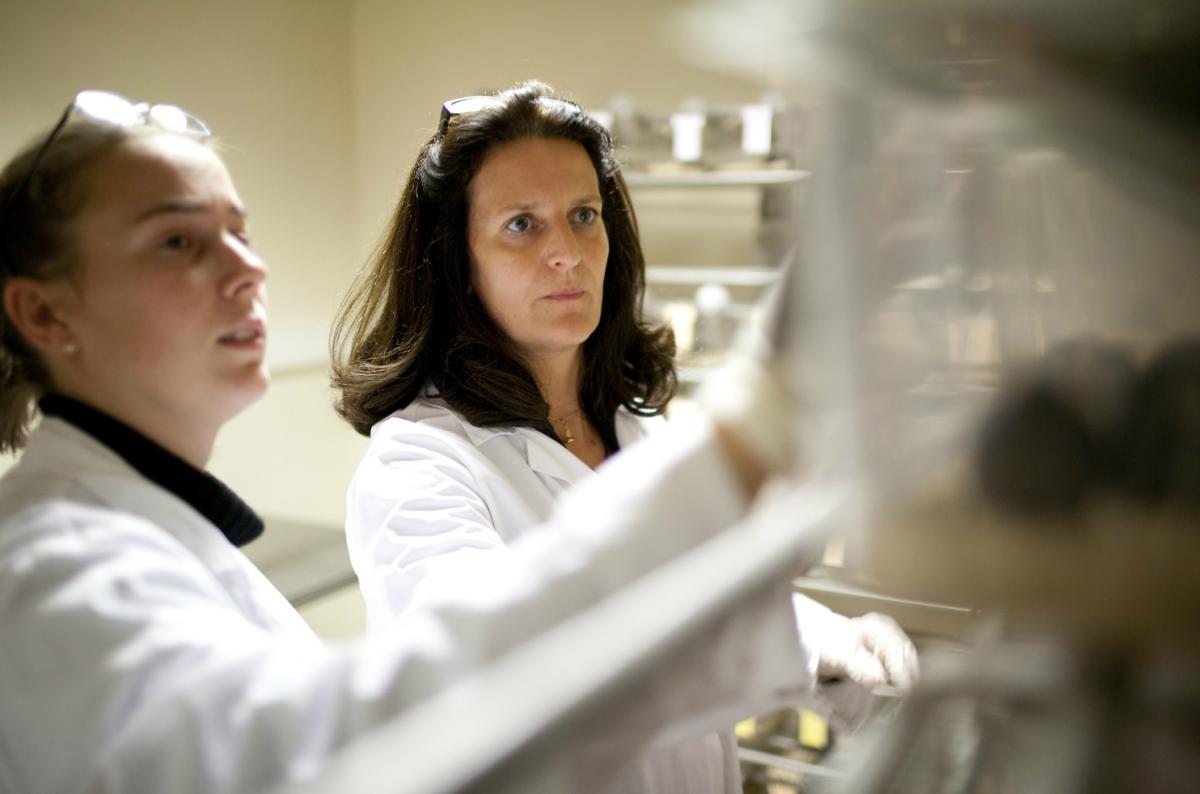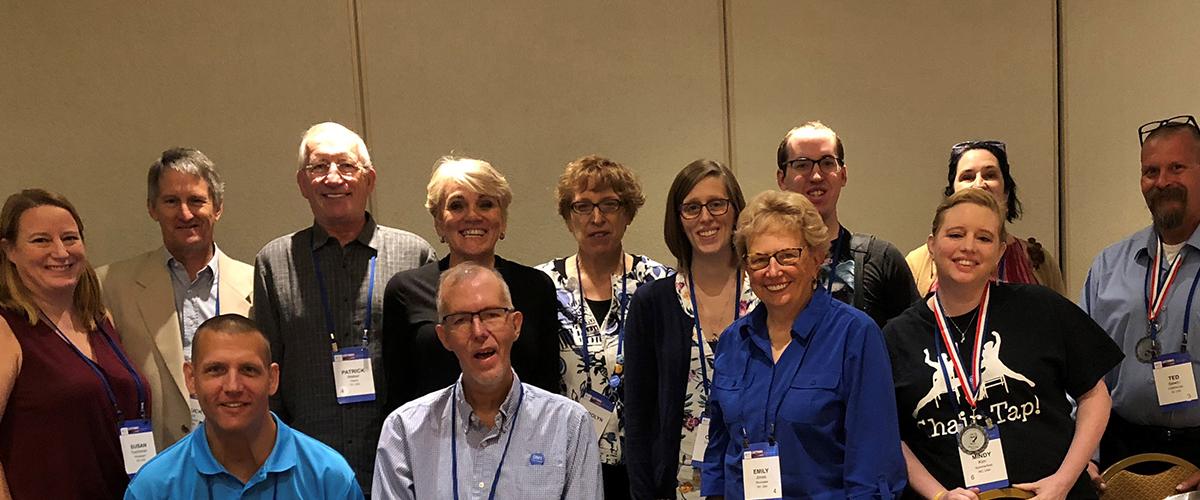An Interview with Dr. Geneviève Gourdon
In the early 1990s, French geneticist Geneviève Gourdon was finishing up postdoctoral work at Oxford University and thinking about the next step on her professional path. Up to that point, her work had been focused on the fundamentals of genetics and gene regulation. She decided to return to France and to look for a research area related to a specific disease. “I wanted to do research that could be helpful for patients,” she recalls.
In 1994, Gourdon joined the lab of pioneering researcher Dr. Claudine Junien, who was then working on myotonic dystrophy (DM). “They were looking for someone to develop a mouse model to study the disease, and that was part of my training at Oxford,” Gourdon recalls. “So when I arrived, we started work on a mouse model for myotonic dystrophy.”
Twenty years later, Geneviève Gourdon directs a laboratory of eight researchers studying the genetic causes of DM for Inserm, the French national institute for research medicine. She feels fortunate that she and her coworkers are now based at the Institute des Maladies Génétiques (Imagine), a brand new, technology-packed facility devoted exclusively to the study of genetic diseases. With 850 staff, Imagine is an unmatched place to do this kind of research, Gourdon says. “Even if researchers are not working in the same field, it’s nice to share ideas and get input from other genetic scientists on what you are doing.”
Mouse Models for DM
 Central to the lab’s work is the use of the transgenic mouse models for DM such as the ones that Gourdon helped to develop in the 1990s. “Transgenic” means that the mice carry human genes related to the disease, and Gourdon’s team has developed mice that show very high levels of the CTG repeat expansion in the DMPK gene that causes DM. Using the mice, the team studies the mechanisms responsible for the repeat, its consequences in the body, and possible ways of interfering with the damage the repeat causes.
Central to the lab’s work is the use of the transgenic mouse models for DM such as the ones that Gourdon helped to develop in the 1990s. “Transgenic” means that the mice carry human genes related to the disease, and Gourdon’s team has developed mice that show very high levels of the CTG repeat expansion in the DMPK gene that causes DM. Using the mice, the team studies the mechanisms responsible for the repeat, its consequences in the body, and possible ways of interfering with the damage the repeat causes.
“By understanding the molecular mechanisms,” Gourdon says, “we can know where to act to try repair what is going on in the cell.”
One important line of research has been on the effects of DM in the brain. For a long time, DM was thought to be primarily a muscle disease. But brain changes are of enormous importance to patients and families, as was brought home to Gourdon during a meeting with Shannon Lord at the third meeting of the International Myotonic Dystrophy Consortium (IDMC-3) in Kyoto, Japan, in 2001. Lord, who would become the founding chair of MDF, was affected by a mild form of DM and had two sons with the childhood-onset form of the disease. After hearing Lord’s description of troubling mental changes caused by DM, “I decided to focus my own research on using mouse models to study these brain abnormalities,” Gourdon says. “I believe that, for the moment, we have one of the few mouse models that allows the study of brain changes due to the genetic mutation.”
Gourdon’s lab also is researching the defect in the neonatal period, she says, “because we think our model might reproduce some aspects of the congenital form of the disease.”
Looking Forward to IDMC-10
Gourdon has attended every biennial gathering of the International Myotonic Dystrophy Consortium (IDMC), beginning with the first one in Paris in 1997, and she serves as the co-chair of the IDMC-10 conference in Paris in June. “Since it’s the tenth one, we are hoping to celebrate the anniversary of the creation of the IDMC,” she says.
Gourdon says that she “couldn’t imagine missing an IDMC meeting. All the people who are working on DM are usually there. It’s a place to establish collaboration with colleagues from other countries. We know each other very well - some of us have become friends. There’s a very good spirit in the community, which is not always the case in other research areas. Of course, there is competition, which is good, but also is a lot of collaboration and good communication, which is good for the patient, because it means the research goes faster.”
Looking back, Gourdon is pleased with the decision she made twenty years ago to beginning researching DM. “It’s a pleasure to collaborate with these people. And from a scientific point of view, the disease is very intriguing. Although the challenge to find a cure is great, there is the potential to help a lot of people.”
04/23/2015

